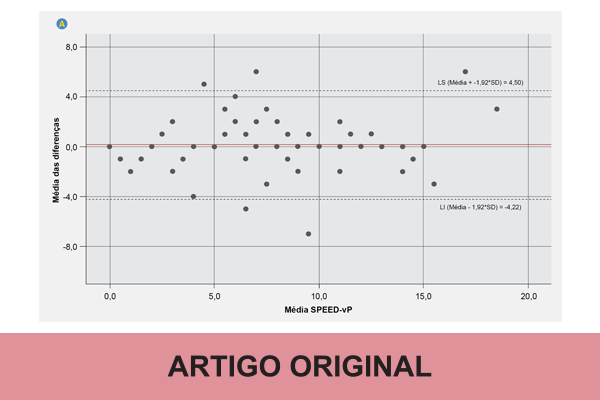SOCIAL MEDIA
Portuguese Medical Association's Scientific Journal

Introduction: The aim of this study was to translate and adapt the Standardized Patient Evaluation of Eye Dryness questionnaire to European Portuguese, as well as assess the psychometric performance of the translated version, including repeatability and agreement.
Material and Methods: The original Standardized Patient Evaluation of Eye Dryness - SPEED questionnaire was translated and adapted to the Portuguese cultural context by following a scientifically valid methodology commonly used in the process of adapting tools to other cultures and languages. The questionnaire resulting from the translation into the new language was subject to a pre-test where the comments of the participants were written and considered for the final version of the questionnaire. For the scale validation of the final version of the translated questionnaire, 89 subjects from a non-clinical population, aged 18 to 84 years, were asked to answer the questionnaire (61% were women). One week later, the same questionnaire was repeated by 63 subjects. The internal reliability of the questionnaire was analyzed by Cronbach’s alpha, temporal stability by test-retest, and analysis of agreement between measures by the Bland-Altman method.
Results: The internal consistency of the translated questionnaire, SPEED-vP was high (α = 0.871) and all questionnaire items contributed to an increase in this index. This consistency was also confirmed to be high in the retest (α = 0.856) and when the sample was stratified by age and sex. The SPEED-complete questionnaire also showed high consistency (α = 0.88). The repeatability of the instrument was high (ICC 0.933; 95% CI: 0.899 and 0.960) and the Bland-Altman plot revealed good agreement between measures.
Conclusion: The Standardized Patient Evaluation of Eye Dryness in Portuguese (SPEED-vP) showed good psychometric properties for the Portuguese population. Therefore, the translated version of the SPEED-vP questionnaire could be used to quantitatively measure the presence of dry eye symptoms in the Portuguese population.